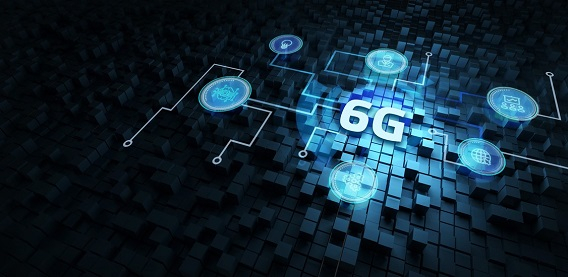An Essential Introduction to the Vision and Potential of Future 6G

While the world is still in the process of deploying fifth-generation wireless, the research and development into its successor, 6G, is already well underway. The sixth generation of wireless technology is not just envisioned as a faster version of 5G; it represents a conceptual leap towards a future of truly ubiquitous, intelligent, and instantaneous connectivity. 6G aims to push the boundaries of communication far beyond what is possible today, targeting peak data rates in the terabits per second (Tbps), latency measured in microseconds, and a level of reliability and device density that will enable a seamless fusion of the physical, digital, and biological worlds. It is the technological vision that will underpin the science fiction-like applications of the next two decades, from holographic communication and city-scale digital twins to a fully realized metaverse and a pervasive network of intelligent, sensing devices, creating a truly connected global society.
The technological ambitions of 6G are breathtaking and require fundamental breakthroughs in several key areas. To achieve its target of terabit-per-second speeds, 6G research is exploring the use of much higher frequency spectrum bands, moving into the sub-terahertz (THz) and even visible light spectrum. This will require entirely new types of antenna and semiconductor technology. Another core focus is the integration of artificial intelligence and machine learning (AI/ML) directly into the fabric of the network itself. A 6G network is envisioned to be self-optimizing, self-healing, and context-aware, with AI managing the complex network resources in real time to guarantee performance and efficiency. This "AI-native" network will not just transport data but will also function as a distributed sensing and computation platform, turning the network itself into a source of intelligence and awareness.
The key performance indicators (KPIs) for 6G go far beyond just speed and latency. Researchers are focused on new metrics such as extreme reliability, precise positioning (with centimeter-level accuracy), and enhanced security and privacy. Another major focus is energy efficiency and sustainability. With potentially trillions of connected devices, it is critical that the 6G network is designed to be far more energy-efficient per bit than previous generations to mitigate its environmental impact. 6G Market is Reaching at a CAGR of 51.86%, Projected To Grow from USD 8.08 Million to USD 800.37 Million During 2025 - 2035. This explosive growth, albeit from a small initial base, reflects the massive research and development investment currently being poured into solving these complex technological challenges by universities, corporations, and governments around the world.
In essence, the vision for 6G is to create a network that acts as a sixth sense for humanity, a ubiquitous digital fabric that is seamlessly woven into our environment. It aims to move beyond just connecting people and things and to enable a new era of immersive, intelligent, and multi-sensory digital experiences. While commercial deployment is still a decade or more away (likely around 2030), the foundational research being conducted today is laying the groundwork for a future where the line between the physical and digital worlds becomes truly imperceptible, promising a level of connectivity and intelligence that will redefine what is possible in communication and technology.
Explore Our Latest Trending Reports:
Collaboration Endpoints Market Size





